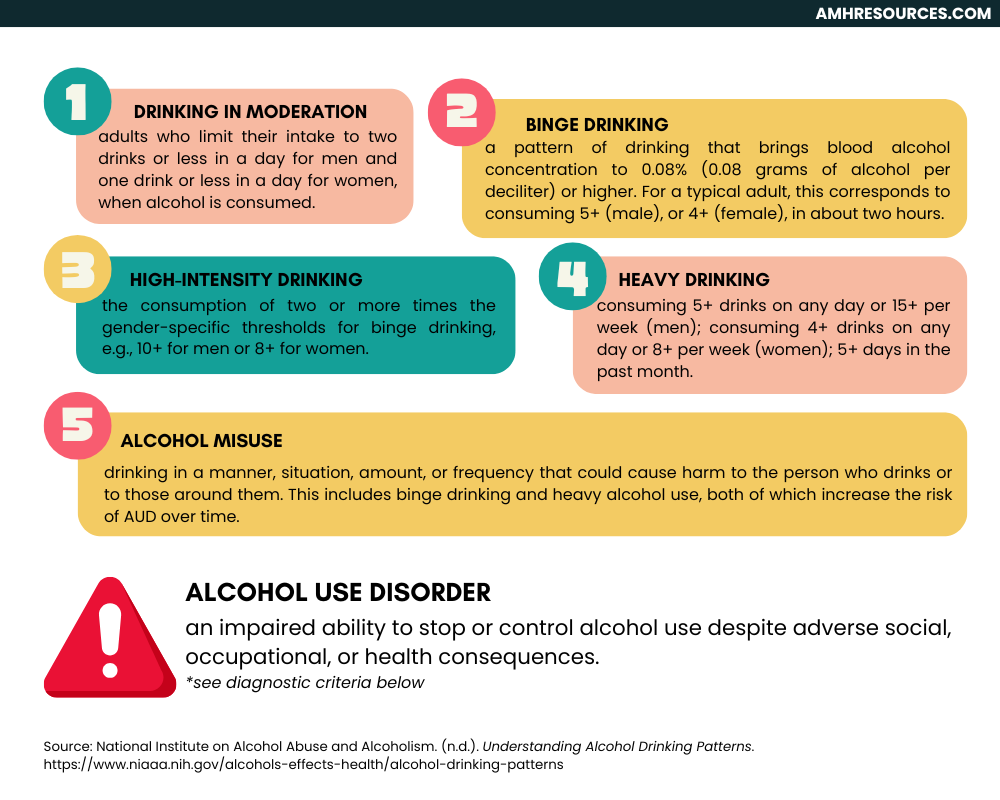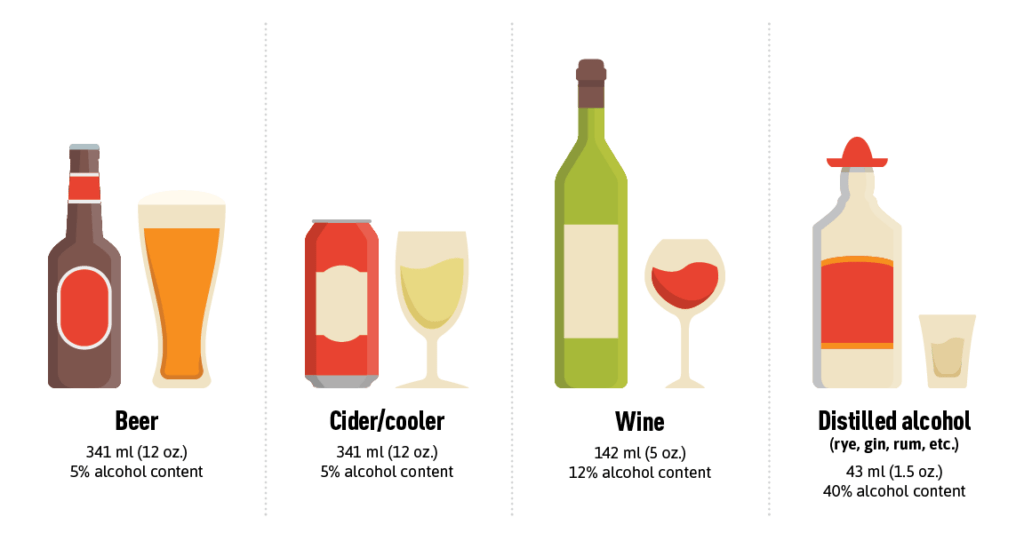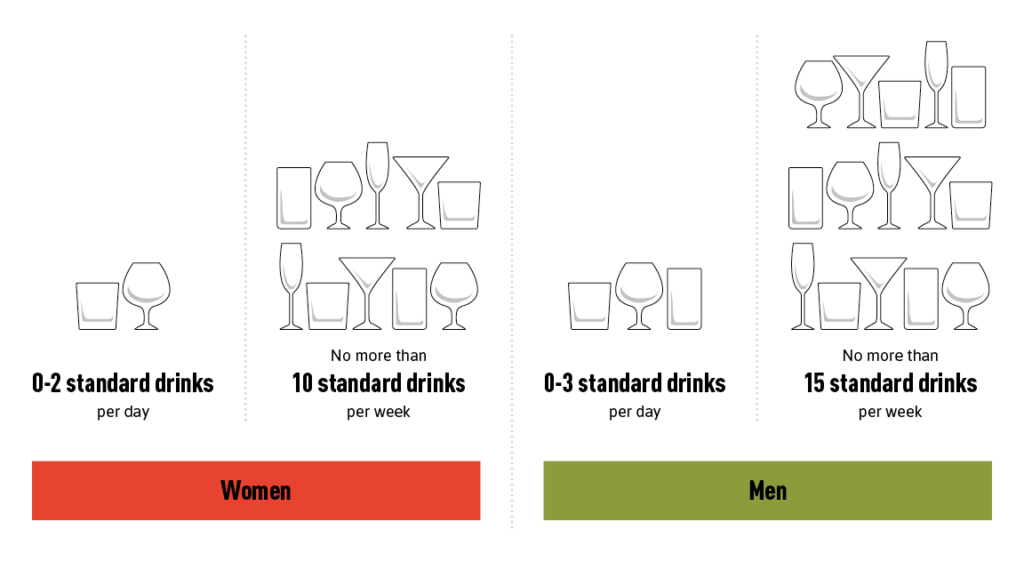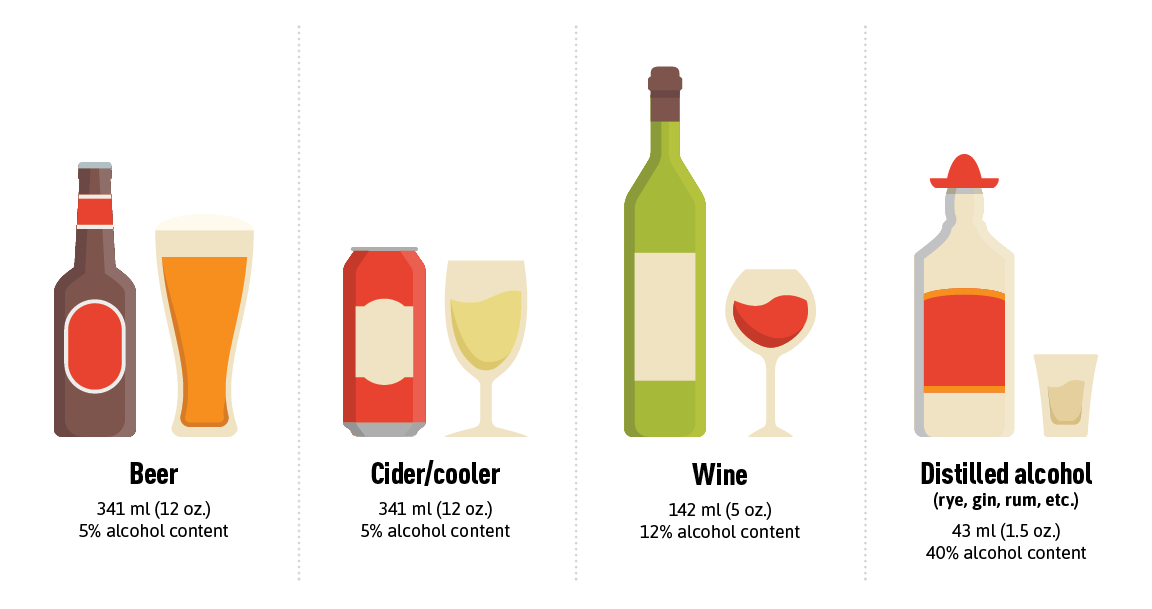Diagnosing AUD
Diagnosing AUD
According to the DSM-5, a diagnosis of Alcohol Use Disorder occurs when a pattern of problematic alcohol use leads to a clinically significant impairment. The individual must display 2 or more of the following 11 criteria within a 12-month period. The number of symptoms determines the severity of the disorder.
WATCH: We Were Super Wrong About Mental Illness: The DSM’s Origin Story
WATCH: What is Alcohol Use Disorder?
Statistics
• 2.6 million deaths worldwide were attributed to alcohol consumption in 2019.
• 2 million of these deaths were men.
• 13% of these deaths affected younger people aged 20 to 39 years old.
• The proportion of people with AUDs in contact with treatment services is low – ranging from 1% to 14% depending on the country.
• 1 in 10 children live with a parent with AUD.
• AUD is 3-4x higher in families where a relative has AUD.
• About 3% of youth ages 12 to 17 had AUD in the past year.
• It is the 4th leading cause of preventable death in the U.S.
• Less than 5% of Americans with a diagnosis receive any treatment.
References: American Psychiatric Association (n.d.) & World Health Organization (2024)
Causes & Risk Factors
Age
Alcohol use tends to begin in late adolescence and early twenties, peaks in middle to late twenties, and begins to slow by early thirties (Addiction Center, 2024). Those in their early to mid-twenties are the most likely to develop an alcohol use disorder. Furthermore, the younger a person is when they begin to drink, the more likely they are to develop an Alcohol Use Disorder later in life – this is especially true if they start before the age of 15.
Heavy drinking during adolescence can negatively impact critical brain development (see: NIAAA). It is also associated with risky behaviours, such as drug use, unprotected sex, academic problems, impaired driving, conduct problems, suicide, and increases the likelihood of developing an AUD in adulthood. Furthermore, research suggests that rates of anxiety and depression are increasing among adolescents, especially girls, who are more likely to use alcohol to cope with these conditions (White, 2020).
Research also shows that alcohol use and alcohol-related harms are increasing among older people (ages 55 to 75), with increases being larger for women.
Family & Genetics
The genetic implications of Alcohol Use Disorder have been widely studied. These genetic factors also contribute to alcohol consumption levels, alcohol metabolism, hangover severity, alcohol-associated diseases and more (Edenberg & Foroud, 2013; Addiction Center, 2024).
There is no singular gene that leads to the development of AUD as many genes and variations of genes have been shown to impact risk (American Addiction Centers, 2024). In fact, research has discovered at least 51 genes that impact AUD (Addiction Center, 2024).
Although up to 50% of the reason why someone develops an AUD can be attributed to a family history of the disorder, it is not a guarantee (Addiction Center, 2024). Epigenetics, which is the interaction of genes and the environment, and social factors play a significant role in AUD as well.
Education & Career
Alcohol consumption is more likely in those who are more highly educated (Addiction Center, 2024). In the U.S. for example, 80% of college graduates drink, whereas 52% of non-college students drink. Certain professions are more likely to develop an Alcohol Use Disorder, especially those in high-stress and/or high-risk careers (e.g., military members).
Religion
Although anyone of any religion can develop an Alcohol Use Disorder, those who adhere to strict religious values that strongly oppose alcohol use are less likely to drink and therefore develop AUD (Addiction Center, 2024). This is particularly true when the religion plays a significant role in influencing the availability of alcohol, social practices, and local laws.
Psychological
Certain psychological conditions can increase the likelihood that someone will develop an Alcohol Use Disorder (Addiction Center, 2024). For example, AUD is more likely for those diagnosed with depression, social anxiety, and bipolar disorder and others. Psychiatric disorders that present deficits in executive function (e.g., attention-deficit/hyperactivity disorder) or negative affect (e.g., depression, anxiety) are at an increased risk for developing AUD (NIAAA, 2024):
- 20-40% of those being treated for an anxiety disorder
- Up to 40% for major depressive disorder
- 15-30% of people with AUD also have post-traumatic stress disorder
- 40-50% have had another substance use disorder
- Up to 91% have a sleep disorder
Many individuals with a psychological illness(es) turn to alcohol and/or other substances as a way to cope with their disorder (Addiction Center, 2024; NIAAA, 2024). A history of trauma, regardless of the type of trauma, presents an increased risk for abusing alcohol (Brady & Back, 2012). Furthermore, the disorders themselves impair someone’s ability to recognize the reality of their drinking and to acknowledge the risks and warning signs associated with their drinking (NIAAA, 2024).
Sex & Gender
Sex and gender are distinct constructs – sex refers to biological factors whereas gender refers to social and cultural factors (Gilbert et al., 2018). Research has shown that biological factors (e.g., hormones, fat and muscle composition, and body water content) differ by sex, and these differences affect alcohol metabolism and the risk of a variety of negative consequences. Additionally, physiological sex characteristics can shift for many transgender individuals who undergo gender-affirming treatments, such as hormone therapy. This, however, is still a new area of research.
Gender, on the other hand, is a social construct that involves many characteristics, such as feelings, behaviours, preferences, perceptions, and social relationships (Gilbert et al., 2018). Gender influences drinking behaviours, such as the onset of drinking, the frequency and quantity of drinking, and the risk of alcohol use disorder. Research has found that several alcohol-related behaviours are more likely to be predicted by certain gender-related characteristics (e.g., personality traits and social roles) than physiological sex characteristics.
Globally, men consume more alcohol than women and have more alcohol-related harms to themselves and others (White, 2020). However, there are large variations in gender gaps in alcohol use between countries, suggesting that culturally prescribed gender roles significantly shape gender-specific drinking patterns. Lower levels of alcohol consumption harm women at higher rates than men (NIAAA, 2024). For example, even with fewer years of being diagnosed with an Alcohol Use Disorder, women perform more poorly than men on a variety of cognitive tasks. They are also at a greater risk for many alcohol-related health problems, such as cardiovascular disease, liver inflammation, and certain cancers.
LGBTQ+
Sexual minority adults (lesbian, gay, bisexual) are 1.5-3x more likely than their heterosexual counterparts to meet the criteria for an Alcohol Use Disorder (Goldberg et al., 2013; McCabe et al., 2010). However, studies have found that the risk for developing alcohol use disorder is greater in women who are sexual minorities than in heterosexual women (Hughes et al., 2011; Hughes et al., 2016; NIAAA, 2024). For example, lesbian and bisexual women are twice as likely as their heterosexual counterparts to engage in binge drinking (White, 2020). The likelihood of AUD is similar for homosexual and heterosexual men (NIAAA, 2024).
Alcohol misuse is highly prevalent in transgender populations, with a 2015 survey indicating high rates of binge drinking in general, but much higher levels in transgender communities of colour (Gilbert et al., 2018). However, it is important to note that their gender identity is not the source of risk, but rather, the societal discrimination and stigma that they face creates psychosocial conditions that heavily increase the risk of problematic alcohol use (Hatzenbuehler et al., 2013). This is also true for sexual minorities as well (Fish & Exten, 2021). Furthermore, these individuals also experience more secondary harms, such as being victims of violence, ranging from sexual and physical assault to verbal abuse (Gilbert et al, 2018).
Social & Cultural
North American culture is one that celebrates alcohol use – it is considered ‘normal’ for teenagers to experiment with alcohol, is a ‘rite of passage’ when becoming an adult, is normalized at family functions, such as birthdays and holidays, and is a significant component of post-education. For example, “hazing” is a long-standing tradition in fraternities, often involving high levels of alcohol use (Ing et al., 2024). Russia has the highest level of alcohol consumption in the world – drinking is a pervasive and socially acceptable behaviour, and despite the widespread problems it has caused, alcohol is a major source of revenue for the government (Korotayev, 2008). Women in more developed countries drink more than women in developing countries (Rehm et al., 2009). (See also: Wikipedia – Drinking Culture).
An individual’s drinking habits are strongly influenced by the environments in which they live and work (Addiction Center, 2024). Research has documented the relationship between social determinants of health (SDH) and alcohol use (Sudhinaraset et al., 2016). Living in an unhealthy environment, whether mentally or physically, presents an increased risk. It is important to be aware of how the various SDHs can influence an individual’s likelihood of developing any substance use disorder (Swan et al., 2021). These include having family members and/or peer networks that engage in alcohol abuse, living and/or working in unsafe conditions, a lack of housing and/or financial security, lower socioeconomic status, a history of abuse and/or trauma, a lack of positive social supports, and prior health conditions.
Socioeconomic status indicators (SES; e.g., income, occupation, education) are strong predictors of health behaviours, such as alcohol use (Sudhinaraset et al., 2016). A higher SES is associated with more frequent drinking, but lower SES is associated with larger amounts of alcohol. Social Capital Theory [PDF] suggests that health is highly influenced by the quality of one’s social networks and connections, with higher levels of social support and community cohesion resulting in better health outcomes.
Bronfenbrenner’s Ecological Systems Theory
This theory is useful in explaining these influences on alcohol use disorder. Each of these levels present a variety of risk and protective factors in the development of Alcohol Use Disorder (Sudhinaraset et al., 2016).
At the individual level, there are personal factors such as SES and race/ethnicity. At the microsystem level, you have the family and home environment (e.g., parental alcohol use) and peer networks, which are situated in the larger community (e.g., societal norms).
This, then, is embedded into the macro-level, where exposure to alcohol through advertisements, as well as laws and policies, influence alcohol use. Media exposure (e.g., television, movies, social media and so on), for example, has been linked to alcohol consumption levels and it is likely that the effects of this differ across socio-cultural groups.
WATCH: Urie Bronfenbrenner’s Ecological Systems Model Explained: How Environments Shape Development
Discrimination & Stigma
On a final, but very important note, discrimination and stigma has been linked to risky health-related behaviours (Sudhinaraset et al., 2016). As an uncontrolled and unpredictable source of stress, discrimination is incredibly harmful to health (Pascoe & Richman, 2009). The psychological implications of experiencing discrimination and stigma lends itself to a stress and coping framework – in other words, the experience of discrimination and stigma results in psychological problems (e.g., depression, anxiety, and so on) that leads to stress and individuals then must find a way to cope with that stress. This is one reason why many people abuse alcohol.
WATCH: The Stigma of Addiction | Tony Hoffman | TEDxFresnoState
Treatment, Recovery & Relapse
Detox & Withdrawal
The first step in treatment Alcohol Use Disorder is for the individual to safely detox and withdrawal from alcohol (Addiction Center, 2024). Alcohol withdrawal is incredibly dangerous because of the effect it has on the brain and body. More specifically, withdrawal symptoms are the opposite of the symptoms experienced when drinking – for example, as a depressant, alcohol causes bodily processes to slow down, but when someone is in withdrawal, the symptoms are stimulating and sped up (thus the “shakes”).
Medications
These are used during all stages of treatment, from detox to sobriety. The most well-known medication is Naltrexone, which must be given after detox. This medication binds to endorphin receptors and therefore blocks the effects of alcohol – reducing cravings and the amount of alcohol consumed. This treatment lasts for about 3-4 months. There is also Acamprosate, which reduces post-acute withdrawal symptoms, and Disulfiram, which causes unpleasant symptoms (e.g., nausea) when someone consumes alcohol. For a more exhaustive list, view this article.
WATCH: Why Prescription Medication to Treat Alcoholism is ‘Vastly Underutilized’
Mutual Support Groups
Alcoholics Anonymous is a peer-led, global fellowship dedicated to abstinence-based recovery (Wikipedia). It uses a spiritually-inclined twelve-step program wherein self-improvement and recovery is beleived to occur by following the will of a self-defined “God as we understood Him .” The first step is to admit you are powerlessness over alcohol and recognize the unmanageability of your life due to your drinking. There are two other subsets of this program: Al-Anon is for the family and friends of the alcoholic and Alateen is specifically for teenagers who have been affected by someone’s drinking.
Behavioural Treatments
These are aimed at changing behaviour through counselling. One prominent kind is Cognitive-Behavioural Therapy, which helps clients recognize and work through the distorted thoughts patterns that influence their behaviours and thus their Alcohol Use Disorder (Anderson, 2023). Another one is Dialectical Behavior Therapy (DBT). This article by Flanagan et al. (2018) provides a fantastic overview into various treatments.
WATCH: How Does CBT Help With Alcohol Addiction?
WATCH: Treating Addiction With DBT
Relapse Prevention
This is an essential aspect of the recovery process from any addiction. Relapse is a process rather than a singular event (Guenzel & McChargue, 2023). There could be an emotional relapse, a mental relapse, or a physical relapse, all of which can occur during any stage of recovery (for more information on the stages of change, view this article).
Melemis (2015) wrote an article on relapse prevention and the five rules of recovery that I believe is very important to read in order to understand relapse / prevention. These rules are: change your life (recovery involves creating a new life where it is easier to not use); be completely honest; ask for help; practice self-care; and don’t bend the rules.
Lastly, many view a lapse and relapse differently: A lapse is often seen as a normal part of recovery, where an individual uses again but recovers within a short time frame. A relapse is a resurgence of full-blown addictive behaviors, suggesting the need to take inventory, reassess, and re-engage with treatment (CAMH, n.d.; Washburn House, 2021).
WATCH: How to Develop a Relapse Prevention Plan
WATCH: Relapse Prevention | The 3 Stages of Relapse




